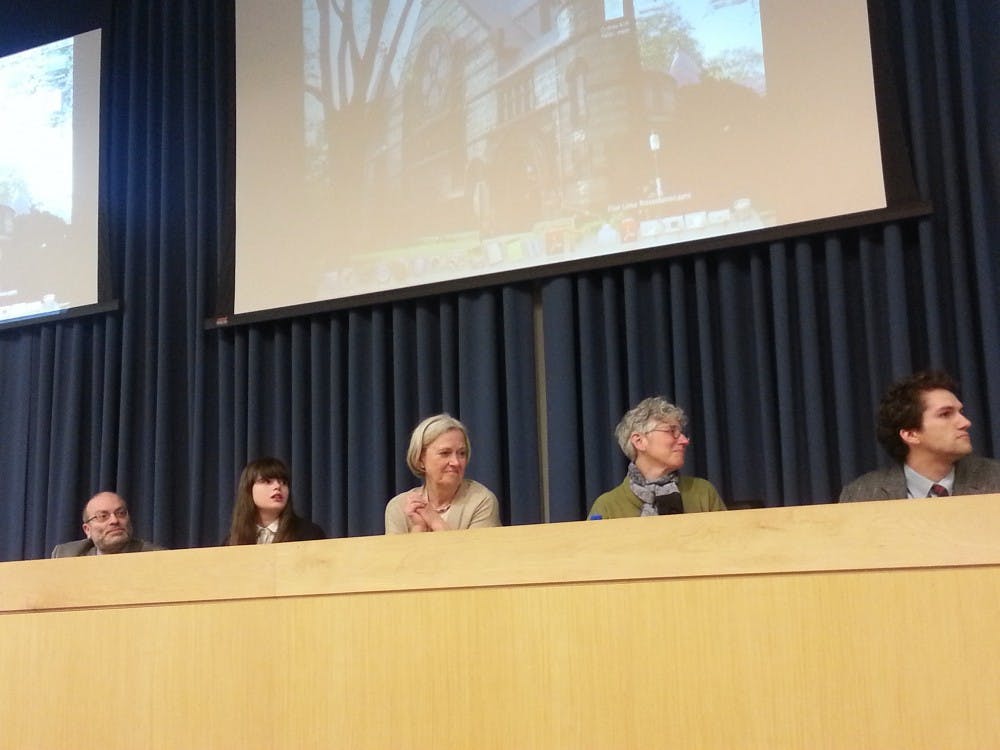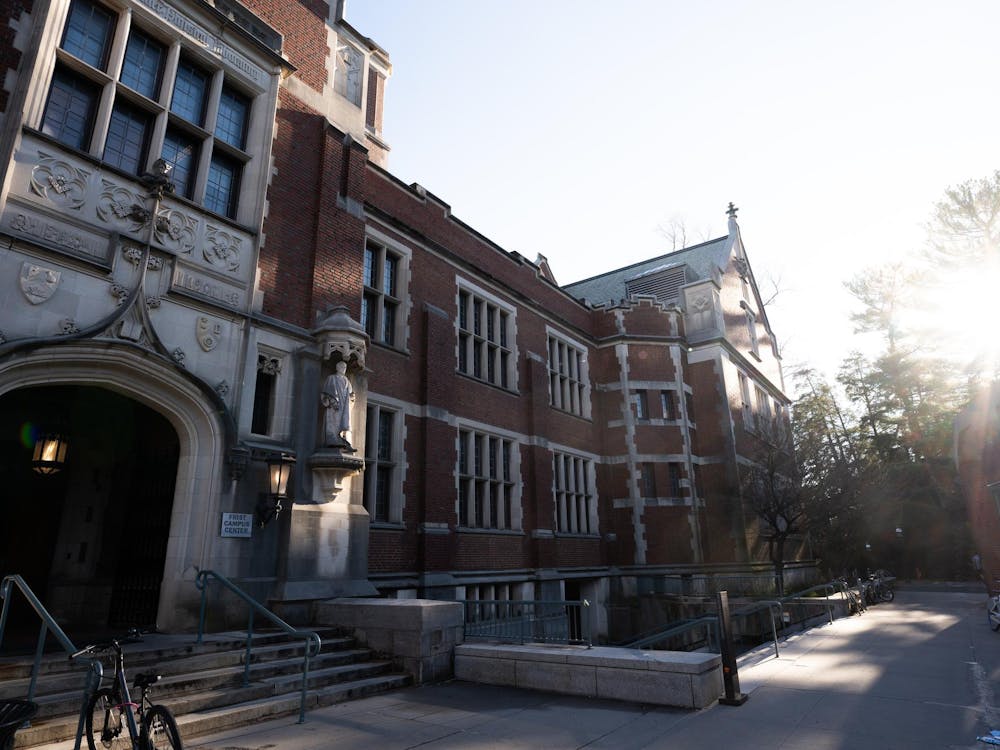By a narrow margin, latkes were declared victorious in the Annual Latke Hamentaschen Debate on Tuesday night.
“[The Latke v. Hamentaschen] academic debate has taken its place in American history,” said University President Emeritus Shirley Tilghman, a veteran moderator of the event, noting the discussion’s importance alongside the debates of slavery expansion and various electoral disputes. “To my knowledge, none of these historical debates have concluded in the consumption of the subject of debate.”
Gender studies and English professor Jill Dolan and ecology and evolutionary biology major Eliot Linton ’15 advocated for the latke, a type of potato pancake.
“Latkes are an ethnic dish as metaphorically redolent with associations and meaning as Norman Rockwell’s paintings of flaky apple pie cooling on the American windowsill, while blond tow-headed Gentile boys and girls crowd around with their noses twitching,” Dolan explained. “Latkes are to Judaism what apple pie is to America — a performative utterance of foundational identity.”
Claiming to have co-authored a research paper with Shirley Tilghman and Charles Darwin on the evolution of Jewish foods in high-profile journals including Nature, Science and the Talmud, Linton provided a scientific justification for the superiority of latkes.
“If you give a mouse a latke, he’ll want to learn Jewish law,” Linton noted. “If you give a mouse a hamentaschen, he dies after a single bite, and the causes are mysterious.”
Hamentaschen should be properly classified as a “gross food,” Linton added.
From the observation of fossil records, Linton saidit is clear that all of the foods that evolved from hamentaschens, such as “livertaschen,” are disgusting. Meanwhile, descendants of latkes, such as hash browns, have all gone to thrive.
“It is clear that latkes are superior because they come from a better tree, one in which our grandparents didn’t force us to eat it,” Linton said. “Hamentaschen is a dangerous mutant and I urge you to vote for its extinction.”
History of science professor Michael Gordin and art and archaeology major Lauren Frost ’16 defended the hamentaschen, a triangular dessert with fruit or other fillings.
Recounting scientist Dmitri Mendeleev’s endeavors to formulate the periodic table of elements, Gordin explained how latkes almost destroyed the history of chemistry.

Much of Mendeleev’s inspiration for the table spurred from serving as a middle school teacher in Odessa where he “couldn’t stand the latke partisans,” Gordin said.
The first element of the table, abbreviated with an ‘H,’ is ascribed to no other substance than a hamentaschen, Gordin noted. Unsurprisingly, the weight of ‘La’ was initially miscalculated and became a stumbling block to the completion of the table, as the “lanthanides” proved too difficult and incongruous to fit into the chart.
Frost subsequently described the “art, beauty, majesty” of the hamentaschen, which she said has a symmetry naturally pleasing to the eye. Frost drew a comparison of the hamentaschen to a renowned sketch by Leonardo da Vinci called the “Vitruvian Man.” In contrast, a latke could only be compared to a repulsive modern sculpture by Joseph Beuys called “Fat Chair,” Frost said.
The debate concluded with a latke and hamentaschen feast. The idea for the debate originated at the University of Chicago in 1946 and has been held annually at colleges and universities ever since.
The debate was held in the Whig Hall Senate Chamber at 7:30 p.m.









